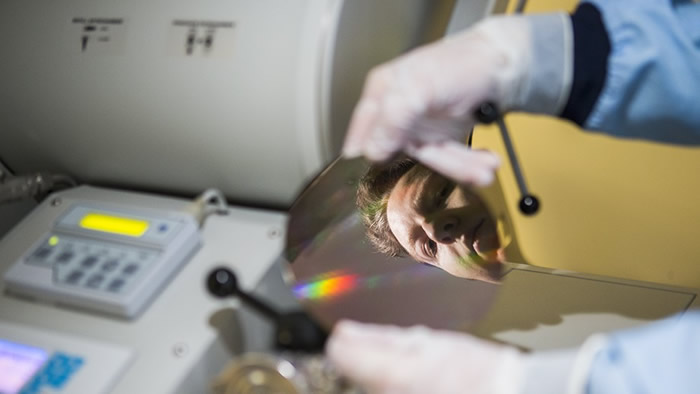Nanolaser doping gives performance edge
The performance of tiny lasers has been improved by adding impurities, in a discovery which will be central to the development of low-cost biomedical sensors, quantum computing, and a faster internet, by scientists at The Australian National University (ANU). Researcher Tim Burgess added atoms of zinc to lasers one hundredth the diameter of a human hair and made of gallium arsenide – a material used extensively in smartphones and other electronic devices.
The impurities led to a 100 times improvement in the amount of light from the lasers.
“Normally you wouldn’t even bother looking for light from nanocrystals of gallium arsenide – we were initially adding zinc simply to improve the electrical conductivity,” said Mr Burgess, a PhD student in the ANU Research School of Physics and Engineering.
“It was only when I happened to check for light emission that I realized we were onto something.”

Gallium arsenide is a common material used in smartphones, photovoltaic cells, lasers and LEDs, but is challenging to work with at the nanoscale as the material requires a surface coating before it will produce light. Previous ANU studies have shown how to fabricate suitable coatings.
The result complements these successes by increasing the amount of light generated inside the nanostructure, said research group leader Professor Chennupati Jagadish, from the ANU Research School of Physics Sciences.
“It is an exciting discovery and opens up opportunities to study other nanostructures with enhanced light emission efficiency so that we can shrink the size of the lasers further,” he said. Mr Burgess said that the addition of the impurity to gallium arsenide, a process called doping, improved not only the light emission.
“The doped gallium arsenide has a very short carrier lifetime of only a few picoseconds, which meant it would be well suited to use in high speed electronics components. “The doping has really has given these nanolasers a performance edge.”
The research is published in Nature Communications.
More information: Australian National University

Comments are closed, but trackbacks and pingbacks are open.